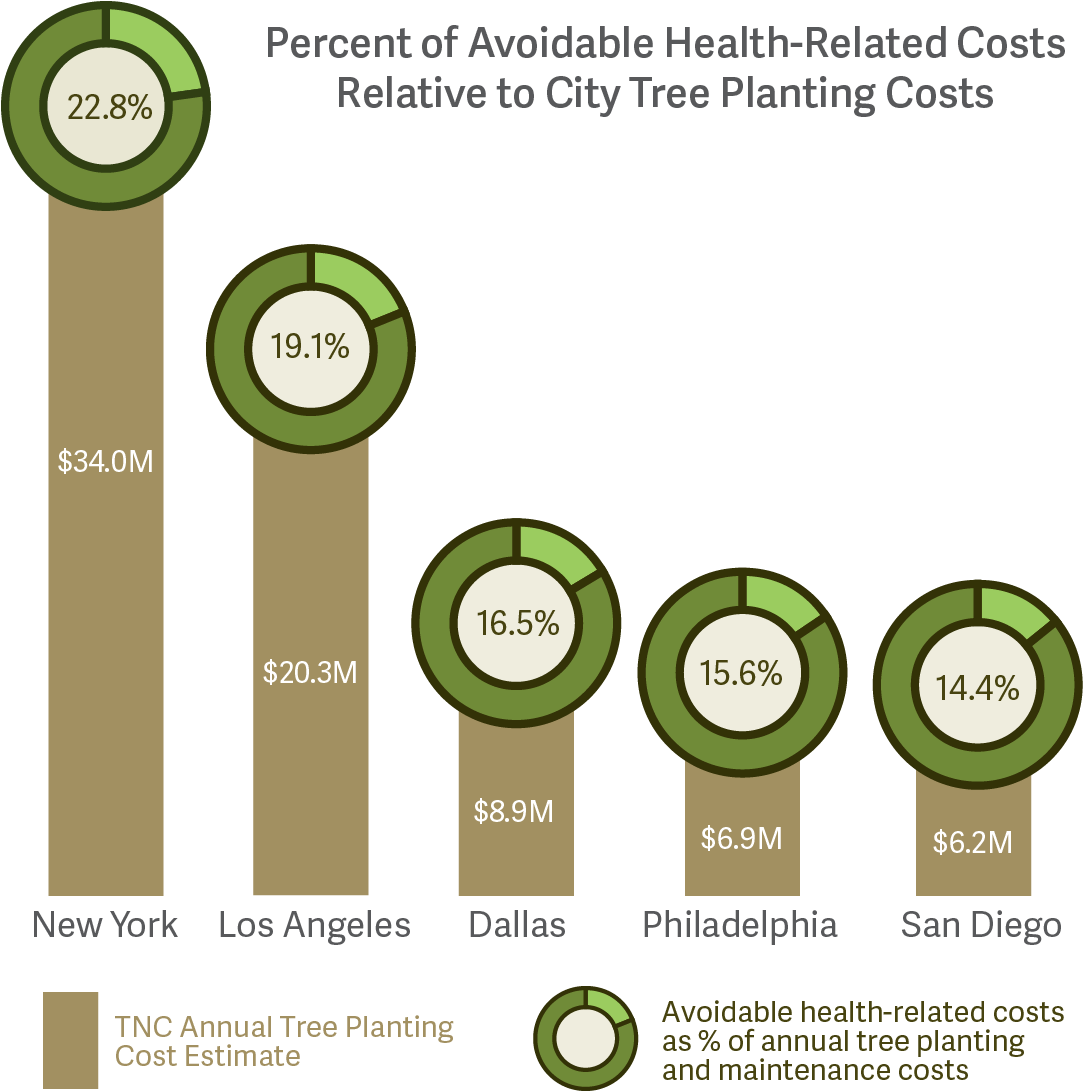-
Planting Trees to Reduce Health-Related Costs
Recent research conducted by Analysis Group found that increased tree planting could benefit millions of people who are adversely affected by particulate matter (PM) pollution, while reducing health-related costs.

Notes: Tree planting cost estimates are based on data from 2014, and avoidable health-related costs are based on data from 2010. Results do not reflect recent natural events.
The trees in urban areas provide a wide range of health and economic benefits. However, most US cities are experiencing a decline in urban forest cover. In a report with The Nature Conservancy (TNC) and the Trust for Public Land, Funding Trees for Health: An Analysis of Finance and Policy Actions to Enable Tree Planting for Public Health, Analysis Group calculated the avoidable health-related costs associated with planting additional trees – avoided costs that could be applied to help offset the costs of the new plantings themselves.
Trees serve as natural filters to lower PM pollution, which is linked to a number of respiratory and cardiovascular conditions. These conditions can result in increased hospital and emergency room visits, which raise medical costs, and may also interfere with employee productivity, causing lost or restricted work days. Increased tree planting could help reduce these types of health-related costs for patients, employers, and insurers.
To estimate the avoidable health-related costs from additional tree planting in 27 cities across the country, Analysis Group used a standard industry tool, the Co-Benefits Risk Assessment (COBRA) model. While tree planting and maintenance costs and avoidable health-related costs vary by city, Analysis Group determined that additional tree plantings in the most effective 20% of available city locations could reduce costs related to respiratory and cardiovascular conditions.
These savings amount to substantial percentages of the tree planting and maintenance costs estimated by TNC for different cities – for example, 23% in New York and 19% in Los Angeles. (See figure.) The report estimates that maintaining the current urban canopy would require an additional investment of around $1.87 per person annually. An additional investment of $5.87 per person annually would allow cities to expand the canopy significantly, leading to the potential health benefits measured by Analysis Group.
Municipalities that are looking for new sources of funding for tree planting may find an unlikely ally in health care companies and employers seeking innovative solutions for lowering health-related costs. Conducting further analysis could help cities make decisions about local tree planting scale and locations that would have the greatest impact on health-related benefits and costs. ■
Howard G. Birnbaum, Affiliate
Erich Trieschman, Senior Analyst
